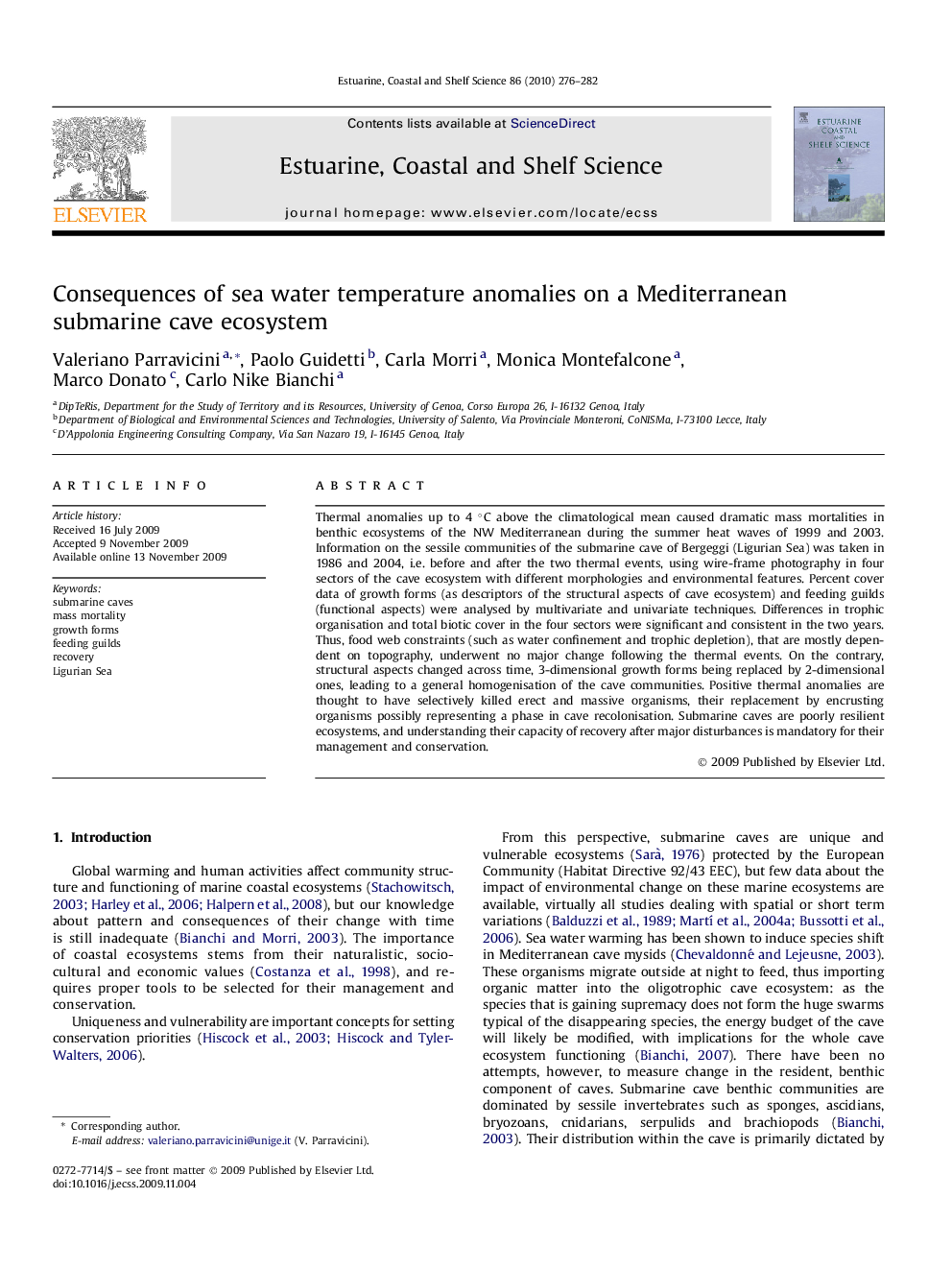| Article ID | Journal | Published Year | Pages | File Type |
|---|---|---|---|---|
| 4541039 | Estuarine, Coastal and Shelf Science | 2010 | 7 Pages |
Thermal anomalies up to 4 °C above the climatological mean caused dramatic mass mortalities in benthic ecosystems of the NW Mediterranean during the summer heat waves of 1999 and 2003. Information on the sessile communities of the submarine cave of Bergeggi (Ligurian Sea) was taken in 1986 and 2004, i.e. before and after the two thermal events, using wire-frame photography in four sectors of the cave ecosystem with different morphologies and environmental features. Percent cover data of growth forms (as descriptors of the structural aspects of cave ecosystem) and feeding guilds (functional aspects) were analysed by multivariate and univariate techniques. Differences in trophic organisation and total biotic cover in the four sectors were significant and consistent in the two years. Thus, food web constraints (such as water confinement and trophic depletion), that are mostly dependent on topography, underwent no major change following the thermal events. On the contrary, structural aspects changed across time, 3-dimensional growth forms being replaced by 2-dimensional ones, leading to a general homogenisation of the cave communities. Positive thermal anomalies are thought to have selectively killed erect and massive organisms, their replacement by encrusting organisms possibly representing a phase in cave recolonisation. Submarine caves are poorly resilient ecosystems, and understanding their capacity of recovery after major disturbances is mandatory for their management and conservation.
